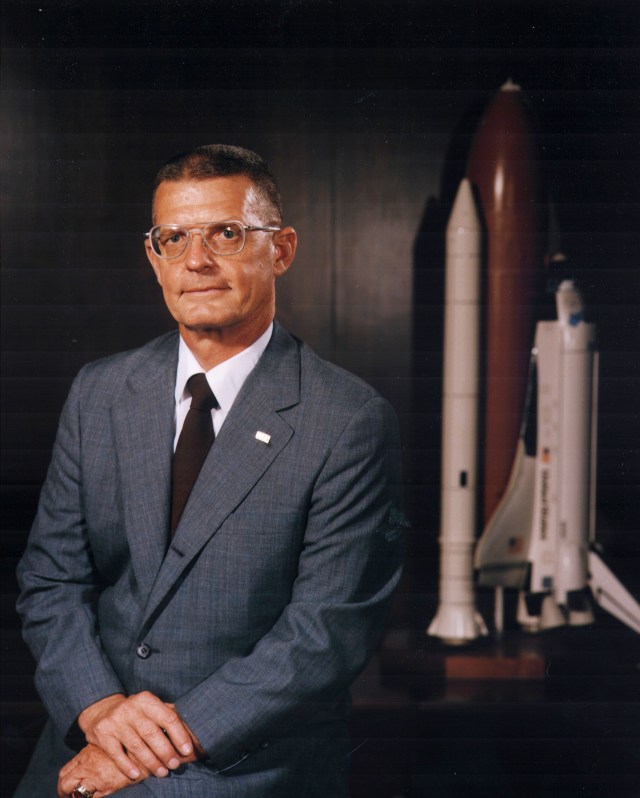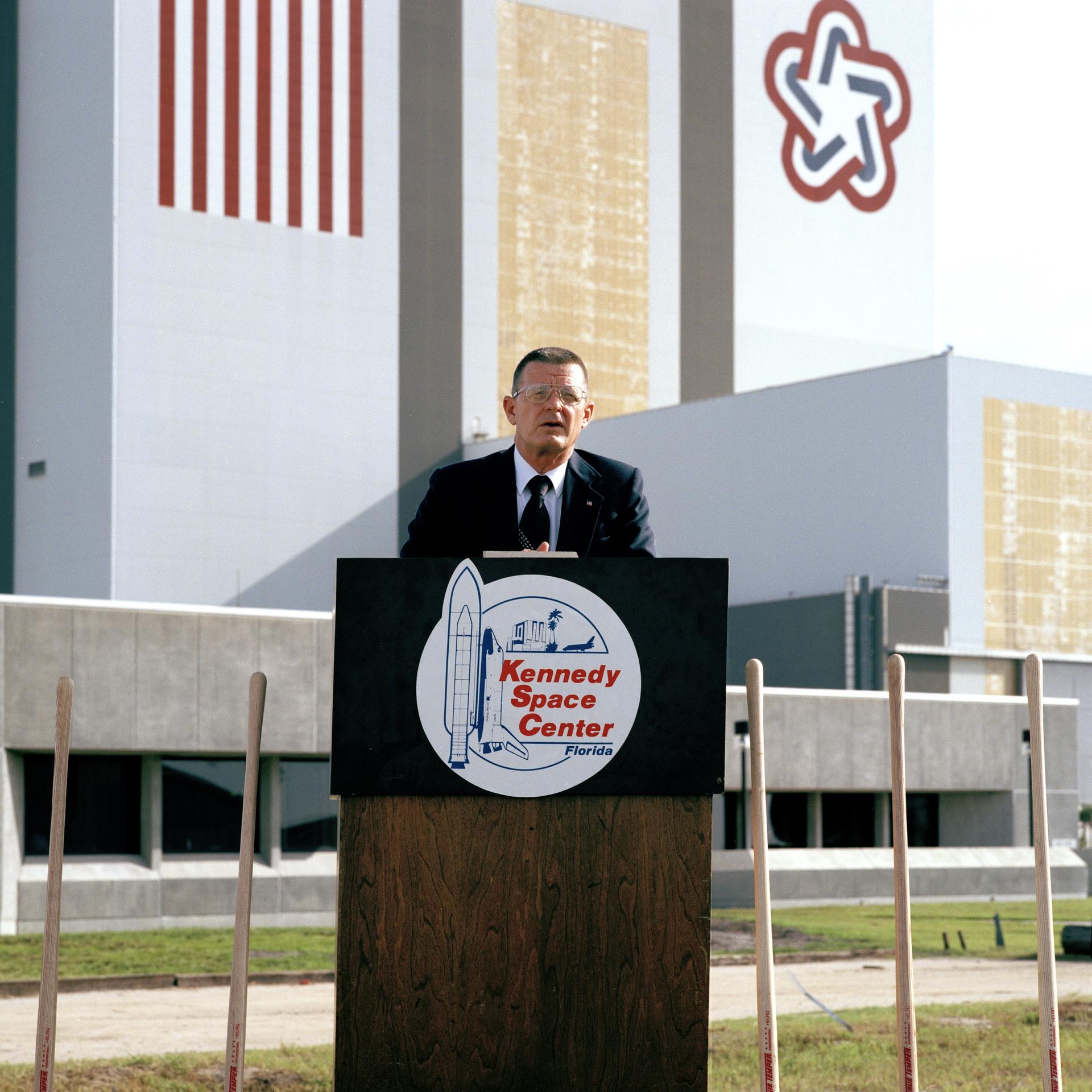
Forrest S. McCartney
Kennedy Space Center Director (1987–1991)
The selection of Forrest S. McCartney (Lt. Gen. USAF, retired) as director of NASA’s John F. Kennedy Space Center was announced on Aug. 31, 1987, by NASA Administrator Dr. James C. Fletcher.
McCartney had served as director of NASA’s principal launch base under detail from the Air Force since Oct. 1, 1986. He concluded a distinguished 35-year military career on Aug. 31, 1987, with a retirement ceremony at the office of the Secretary of the Air Force in the Pentagon.
He assumed the KSC directorship under senior executive service status effective Sept. 1, 1987. McCartney came to NASA from the position of commander, Air Force Space Division. He served as Center Director until Dec. 31, 1991.
Born March 23, 1931, in Ft. Payne, Ala., McCartney graduated from Gulfcoast Military Academy in 1949. He received a Bachelor of Science in electrical engineering from the Alabama Polytechnic Institute, Auburn, in 1952. His first military assignment was with the Air Force Logistics Command at Robins Air Force Base, Ga.
McCartney earned a master’s degree in nuclear engineering from the Air Force Institute of Technology, Wright-Patterson Air Force Base, Ohio, in 1955. Upon graduation he served as project officer for various special weapons programs, and for nuclear weapons safety systems studies at the Special Weapons Center, Kirtland Air Force Base, N.M. He also graduated from the Armed Force Staff College, Norfolk, Va., in 1967.

McCartney’s other Air Force assignments have included duty at the Satellite Control Facility, Sunnyvale, Calif., as a satellite controller during early space operations in 1959; an assignment at the Office of Space Activities, Air Force Systems Command Headquarters, Andrews Air Force Base, Md., from 1961 to 1966; and serving as a project officer in the Titan II program and various Air Force communication satellite programs. He was assigned to the Directorate of Space at U.S. Air Force Headquarters, Washington, D.C., in 1967, as the program element monitor for satellite communications programs and other selected space-related efforts.
General McCartney transferred to the Air Force Eastern Test Range, headquartered at Patrick Air Force Base, Fla., in 1971, as the director of Range Engineering.
In June 1974, McCartney was assigned to the Space and Missile Systems Organization at Los Angeles Air Force Station as the systems program director for Fleet Satellite Communications Systems. In August 1976, he was reassigned within the organization as deputy for Space Communications Systems.
McCartney moved to Norton Air Force Base, Calif., in September 1979, as vice commander of the Ballistic Missile Office. In November 1980, he was named commander of the Ballistic Missile Office and MX Program director. He became vice commander of the Air Force Space Division in May 1982. In May 1983, he became commander of the Air Force Space Division and was also appointed vice commander of the new Air Force Space Command.
Spacecraft programs with which General McCartney has been directly associated include the FLTSATCOM series of military communications satellites, the DSCS II and II communications satellites, the Navstar Global Positioning System, and the Inertial Upper Stage (IUS). He also participated in the construction program of the Consolidated Space Operations Center (CSOC), a command and control center for military space operations, at Falcon Air Force Station, Colo.
His military decorations and awards include the Distinguished Service Medal, Legion of Merit with one oak leaf cluster, Meritorious Service Medal and Air Force Commendation Medal with three oak leaf clusters. He also wears the master missileman badge and the master space badge.
General McCartney is a member of the Board of Trustees, Florida Institute of Technology, Melbourne, Fla., and was awarded an honorary doctorate degree from that institution. He is also on the Board of Directors of the Space Coast Science Center.
He is the recipient of the General Thomas D. White Space Trophy, 1984; the 1987 Military Astronautical Trophy; NASA’s Distinguished Service Medal; and one of the recipients of the National Space Club’s Goddard Memorial Trophy, presented in March 1989.
McCartney was promoted to his retirement rank of lieutenant general on May 1, 1983.
McCartney and his wife, the former Ruth Griffis of Memphis, Tenn., have two daughters, Margaret and Worthy. He passed away in Florida, on July 17, 2012.




























